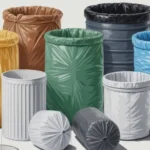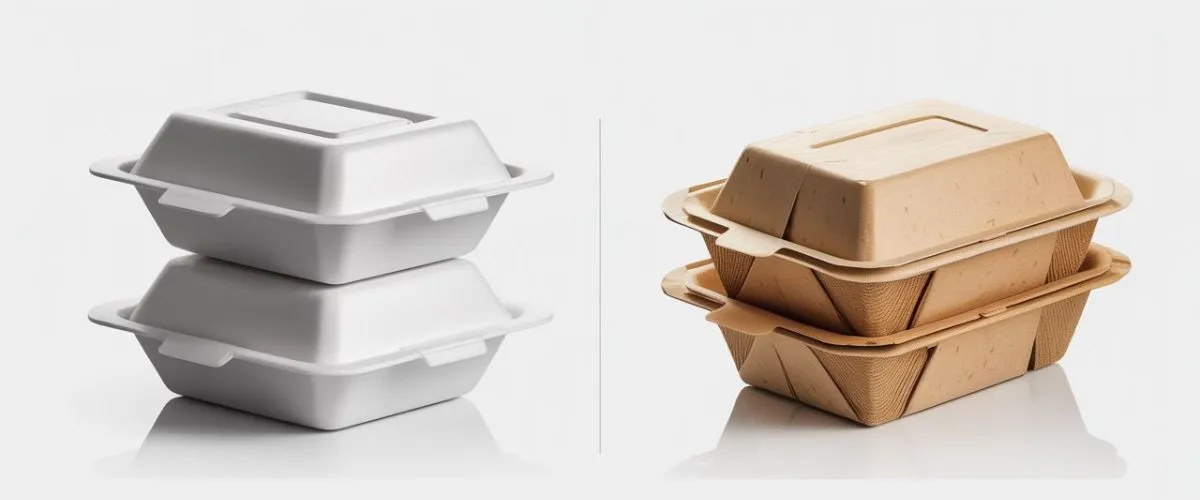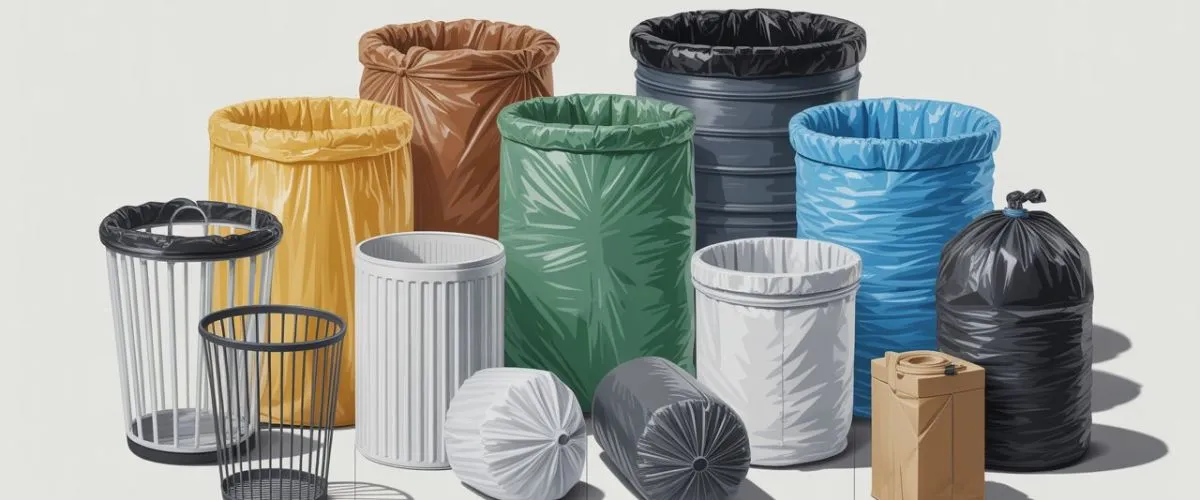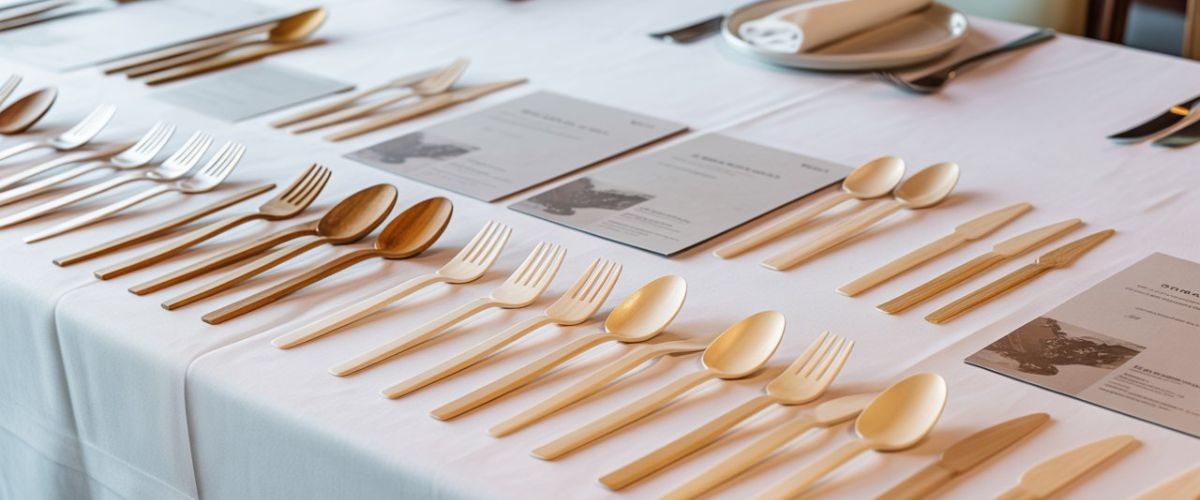Qualities of the presentation and sustainability are very important in choosing the ideal food container for a food business, either a foam container vs. a bagasse food container. They have similar uses; however, the types of material, cost, and effect on the environment differ.
Be convinced that the differences between these Foam containers are light, tough, and good heat carriers; Bagasse is biodegradable, eco-friendly sugarcane pulp. By now, you are able to choose food packaging for your food service business.
Understanding the Basics of Food Containers
In whatever manner the containers are intended to serve the food purposes, they should accommodate food safety systems for different needs and requirements, such as preservation or maintenance of the fresh quality of food and then the cool temperature controls.
Thus, different standards are achieved through foam and bagasse. To put it simply, foam has good temperature insulation from cold or hot food, and bagasse keeps it much fresher for longer periods. The basic understanding you have about some of the properties of the materials will give you an edge in deciding how to package.
Benefits of Foam Containers
Made of polystyrene, foam containers are light and have poor insulation. Thus, the containers keep food hot because they trap heat and maintain it for a considerable time during delivery or takeaway.

It is moisture-resistant and leakproof even in the case of oily and saucy food. They have thermal insulation properties and a very low price for mass catering, which makes them a great choice.
Advantages of Bagasse Containers
Biodegradable and compostable, these bagasse containers come 100% from the fibrous residue after extracting juice from sugarcane; they have such attributes to be a good and sustainable substitute. The bagasse containers are grease-resistant and moisture-resistant, thus serving hot and cold foods equally. Bagasse also bears an innate grace, which would allure the eco-conscious consumer.
How to Compare Strength and Durability
Flexibility and cushioning against shattering or spilling food, medium foam cups and containers are durable and strong. From pastas to thick gravies, they can take everything, while the bagasse ones have better structural strength and will not sink easily under heavy portions.
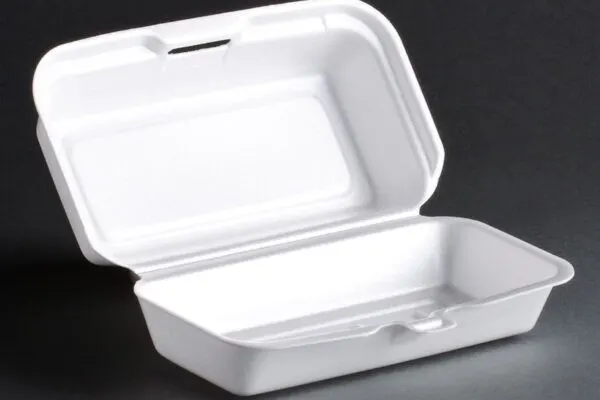
Bagasse also has much higher temperature tolerance during reheating in the microwave, while foam may just start to get deformed at such high heat. Your choice would, then, depend on how your business serves and packages its food.
How to Assess Price and Affordability
Foam containers are generally cheaper compared to those made of bagasse. However, lower production cost goes a long way for those on tighter budgets willing to spend little on packaging. Restaurants that usually cater to thousands of clients have always counted on foam packaging for profit maximization.
Bagasse containers are a bit more expensive, but they have resulted in long-term benefits in terms of brand promotion and regulation with eco-standards. Buying bagasse plates wholesale will save costs for some of them.
How to Choose the Final Option Between Foam and Bagasse Food Containers
The consideration between foam food containers and bagasse food containers encompasses weighing prices, sustainability, and utility. While foam emerges as an advantage from a price perspective, cheap ceiling cost and thermal insulation make foam an ideal line of approach for businesses in fast service. Bagasse offers existence values and is procurable from an environmentally friendly perspective, focusing on the modern eye, which is good for an eco-conscious brand.
Conclusion
Packaging itself indicates concern, quality, and business accountability. A necessary eye should be cast under the stunning reality of foam versus bagasse on the latter, based on operational objectives. Factors like environmental compliance, food safety, and customer preferences should be considered at the time of making decisions.
A sound packaging strategy is likely to improve brand equity and take the path further towards sustainability itself. Both with foam and bagasse, apply your implementation upon durability, hygiene, and presentation.Contact NCP Distribution today for getting the best foam and bagasse food containers at an affordable price.
Read Also: Different Types of Can Liners and Their Uses
FAQs
Q1. What is the Primary Differentiation Between Foam and Bagasse Food Containers?
Ans: While foam and bagasse are two distinct forms of food containers, the criteria on which they differ include material and environmental effect. Foam food containers withstand polystyrene: they have strong insulation properties.
Q2. Are Bagasse Food Containers Safe to Hold Hot Foods?
Ans: They are safe for both hot and cold foods. Bagasse containers do not melt under heat; they can withstand the shape and do not compromise shape under heating conditions, and are microwave-safe, thus serving to keep all food types.
Q3. Why Do Many Restaurants Still Prefer Them in Their Takeaway Menu?
Ans: Foam containers are light, inexpensive, and heat-retaining enough to make deliveries or take away heat. For those reasons, a lot of restaurants use foam containers.
Q4. Are Those Materials Actually Recycled?
Ans: Bagasse containers are compostable. This means that in nature, they can also tend to decompose into compostable material for safe and friendly disposal of waste in the environment. In contrast, foam containers are non-biodegradable products requiring some specific means of recycling.
Q5. Which Option is Better for My Business-roof Foam or Bagasse?
Ans: It all really depends on the priority areas of your business. Foam is cost-effective and has good insulation properties; bagasse is for improving the sustainability status of your business and impressing environmentally conscious customers.



